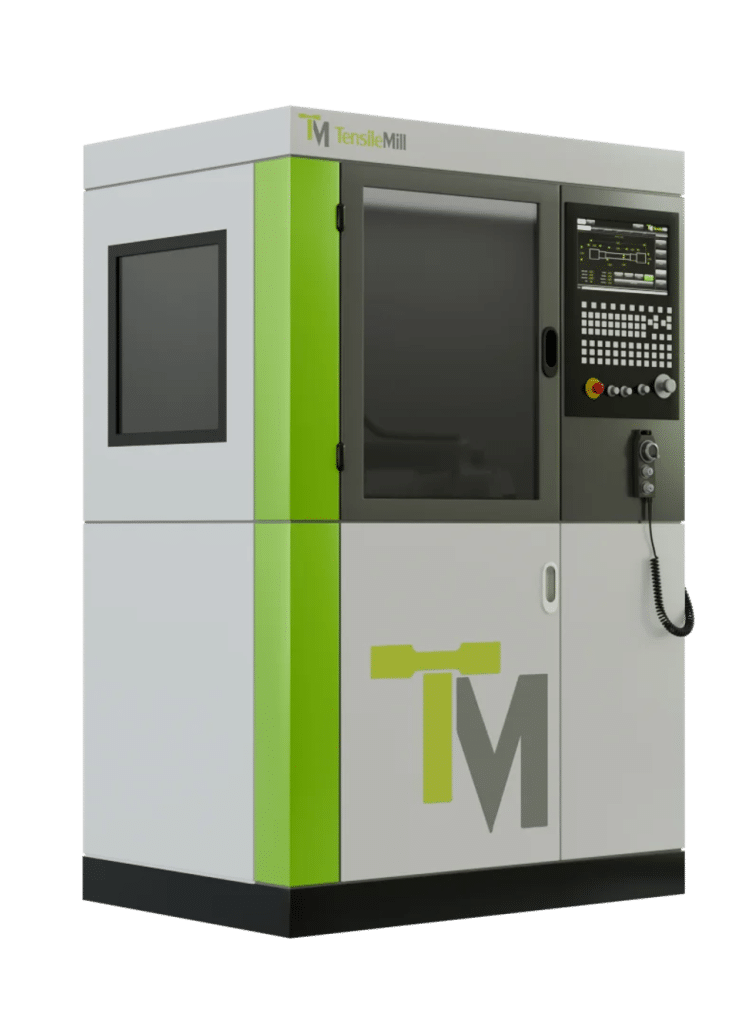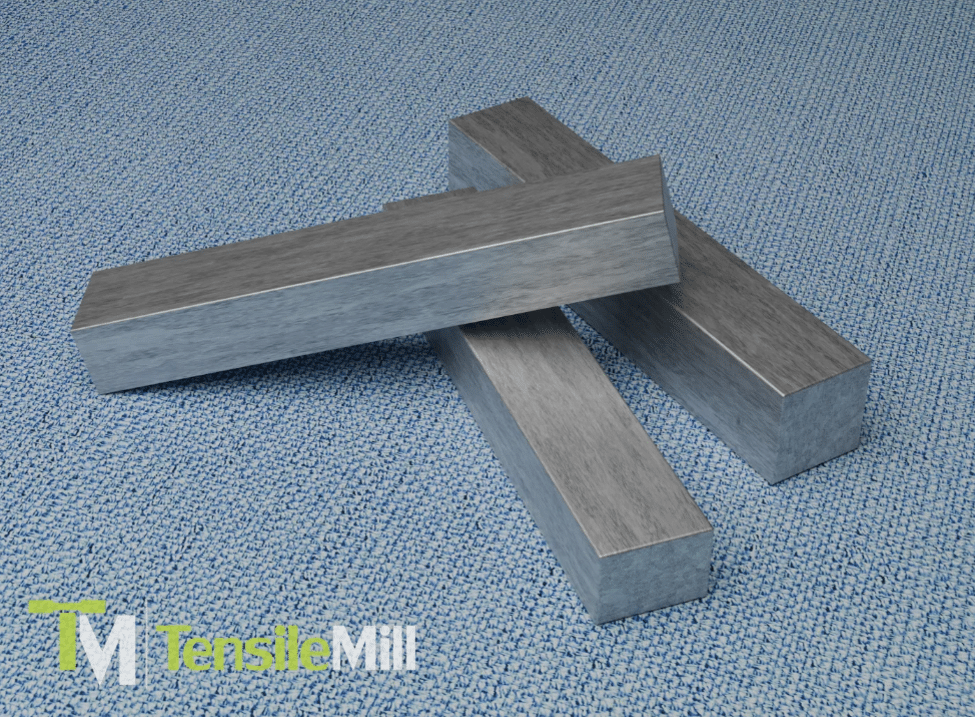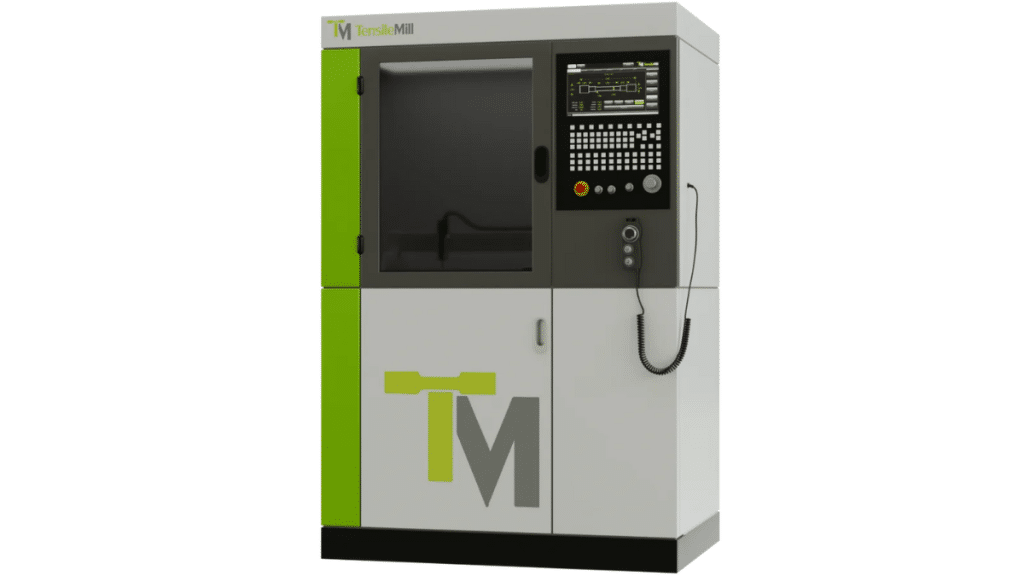Testing metal materials for reliability often demands carefully prepared and precisely notched specimens. Laboratories seeking improved accuracy, speed, and compliance with industry standards—such as ASTM E23—commonly face the challenge of juggling multiple machines for milling, grinding, and broaching. The question arises: is there a single piece of equipment capable of handling the entire process?
One solution that has recently gained attention is the TensileMill CNC – Classic Upgrade. According to its manufacturer, this hybrid CNC platform was developed to simplify tasks typically performed by separate devices, consolidating flat tensile specimen shaping and impact specimen notching into one system. Integrating a user-friendly interface with a FANUC controller reportedly caters to experienced operators and newcomers alike. Although it requires a thorough evaluation to determine fit for specific workflows, early indications suggest that a consolidated approach could save time and reduce operational complexity. It is the purpose of this article to examine notching’s importance, as well as to show how an all-in-one system may benefit testing facilities.
Why the Notching Process Matters
Notching is crucial in shaping specimens for impact tests, where a sharp, consistent notch significantly affects a material’s measured toughness. Laboratories rely on precise notches to replicate standardized conditions and obtain consistent test outcomes. Any deviation, such as uneven cuts or suboptimal depth, can distort results and lead to misjudgments about material reliability under stress. In practical terms, this means that notching impacts everything from product safety in aerospace components to automotive part lifespan.
Modern impact specimen preparation equipment assists in achieving consistent, standard-compliant notches for reliable testing. Systems from companies such as NextGen Material Testing offer precise control over notch geometry and cutting conditions, reducing operator-dependent variability. Having this level of accuracy supports greater repeatability across test batches and increases confidence in the mechanical data used for critical evaluations.
Beyond compliance with strict testing standards, accurate notching can influence lab efficiency. Traditional notching processes often involve multiple steps and operator expertise to ensure every sample meets the required specifications. By contrast, a consolidated system can reduce material handling, speed up cycle times, and minimize human error. With well-defined notches, facilities can conduct impact testing more reliably, reinforcing confidence in final product quality and durability.

The Traditional Approach: Multiple Machines, Multiple Headaches
Relying on multiple machines has long been the standard method for preparing flat tensile and impact test specimens. In many facilities, separate milling, grinding, and broaching equipment works in cooperation to complete each stage of specimen shaping. While this approach can certainly produce the desired results, it often comes with operational drawbacks. One of the most evident challenges is the time involved in moving samples from one station to another. Each transition can introduce scheduling conflicts, especially if a lab’s workflow depends on different teams or if certain machines face high usage rates.
Another major consideration is the skill set required to operate each machine effectively. New technicians may find it daunting to learn distinct systems, especially under pressure to maintain accuracy and throughput. This reality often necessitates more experienced personnel who command higher labor costs and can be difficult to replace if they move on. In addition, coordinating maintenance schedules for multiple machines can cause downtime, further complicating lab operations and elevating costs.
Space constraints also factor into the equation. Not every lab has the floor space to accommodate separate pieces of equipment for each step of specimen preparation. When facilities are forced to juggle large footprints and limited resources, priorities like efficiency and safety can be compromised. If an operator is overseeing multiple machines, there is also an increased risk of errors, with each machine requiring careful calibration and setup.
In short, while the traditional setup of using multiple machines has been highly popular, it can become a bottleneck for laboratories aiming to optimize throughput, reduce operator workload, and maintain strict compliance standards. Recognizing these pain points provides a clearer understanding of why certain facilities are exploring more consolidated solutions to simplify the overall notching process.
Introducing TensileMill CNC – Classic Upgrade
Efficiently preparing both tensile and impact test specimens in one place is a challenge often tackled by multiple pieces of equipment. A more simplified alternative has emerged in the form of a hybrid CNC approach, created to integrate notching, milling, and other machining steps within a single system. One such example, identified through publicly available industry reports, is the TensileMill CNC – Classic Upgrade. It is described as capable of handling different specimen dimensions that conform to international testing standards, potentially removing the need for separate devices.

Several testing facilities note that centralized control and a unified platform can mitigate multiple machine complexities. By offering preprogrammed settings for tasks such as impact specimen notching, the TensileMill CNC – Classic Upgrade appears to reduce setup time and cut down on operator errors. Although individual results may vary depending on specific workflows and operator experience, early adopters have highlighted the software’s intuitive interface and the machine’s dependable performance. These characteristics, in principle, suggest that even organizations with limited CNC expertise could incorporate the system without extensive retraining or facility redesign. As an example of the industry’s move toward consolidated equipment, this hybrid solution underscores the growing demand for cost-effective, space-saving, and precise specimen preparation methods.
Key Features of Hybrid CNC Solution
Among the characteristics that are frequently mentioned is the software architecture. The interface accommodates both novice users and skilled technicians by offering a library of common ASTM, ISO, and DIN specimen configurations. This can greatly decrease the time it takes to begin machining, enabling laboratories to manage throughput more effectively without relying on a dedicated CNC specialist at every stage.
Another point of interest is the hardware design. According to available technical documents, the unit includes a cast-iron frame to enhance rigidity, which helps maintain the high accuracy required for tensile and impact specimen preparation. A servo-driven spindle and automated oil lubrication system aim to ensure consistent performance over extended periods. Facilities that adhere to ASTM E23 for impact testing, for instance, might benefit from minimized variation in notch geometry, a factor known to directly affect test outcomes.
Moreover, the product is presented as a turnkey option, combining multiple machining processes into one station. This arrangement could be beneficial for smaller labs or those looking to conserve space. By consolidating tasks such as milling, drilling, and notching, organizations can potentially reduce logistical and maintenance burdens associated with running different machines. Some sources also point out the manufacturer’s remote software updates, which may help users stay current with evolving test standards and maintain efficiency. An all-in-one design, user-friendly software, and precise hardware demonstrate how a CNC system can address the common bottlenecks in specimen preparation.
Comparison with Traditional or Competing Systems
In many laboratories, the upfront cost of a single, integrated CNC solution can appear higher than the sum of multiple specialized machines. However, a hybrid platform like the TensileMill CNC – Classic Upgrade has the potential to offset this initial investment through its smaller footprint, lower labor demands, and simplified workflow. By consolidating tasks that might otherwise require separate milling, grinding, and notching equipment, facilities can reduce capital outlay on multiple devices and maintenance expenses. In addition, operators can train on one cohesive interface rather than juggling several machine types, which can translate to further savings in time and staff development.
Beyond cost considerations, performance metrics are equally important when evaluating a hybrid system against its standalone counterparts. Conventional setups often rely on multiple units, each with distinct calibration protocols and varying accuracy standards, which can introduce minor inconsistencies between steps. In contrast, an all-in-one design may improve repeatability by performing every stage of specimen preparation under the same set of mechanical and software parameters. This benefit can be especially appealing when targeting stringent quality controls or international standards.
Moreover, cycle times can be substantially reduced if operators no longer have to transfer specimens from one machine to another. With an integrated CNC, switching tasks—such as moving from rough milling to final notch-cutting—can happen in a single workflow. Not only does this speed up turnaround, but it also helps maintain consistent conditions for every sample, which can be crucial for labs striving to produce reliable, reproducible test results.
Who Can Benefit from the TensileMill CNC – Classic Upgrade
Many different stakeholders in the materials testing field may find value in a consolidated CNC solution for preparing tensile and impact specimens. Research and development laboratories, for example, often handle diverse projects requiring flexible machine setups. A hybrid platform that offers support for varying sample dimensions can help these facilities respond faster to fluctuating workloads. Meanwhile, small to mid-sized manufacturers operating in metal-related sectors might appreciate the reduced dependency on multiple pieces of equipment. By using a single machine, they can allocate space and labor resources more efficiently, which in turn may promote consistent output and faster turnaround times.

Automotive and aerospace companies prioritize thorough and accurate materials testing to validate their products’ performance and safety. For these organizations, the advantage of having standardized programming options and the ability to integrate new testing standards without extensive reconfiguration can be significant. The TensileMill CNC – Classic Upgrade is often cited for its capacity to handle impact specimen notching in compliance with ASTM E23, a detail that could be particularly relevant to industries where high reliability under stress is paramount. Laboratories operating under stringent quality control guidelines—such as those dealing with ISO, DIN, or JIS standards—may similarly view this combined approach as a way to maintain repeatable test conditions while minimizing operational complexities.
Bringing It All Together: A Streamlined Approach to Notching and Specimen Preparation
Briefly, the notching process sits at the heart of reliable impact and tensile testing, yet traditional methods often require multiple machines which can lead to operational bottlenecks. By integrating milling, grinding, and notching into a single workflow, a hybrid CNC solution offers an alternative that reduces overhead in both space and labor. Through features such as preprogrammed standards, cast-iron structural integrity, and servo-driven accuracy, systems like the TensileMill CNC – Classic Upgrade highlight how standard compliance and repeatability can be maintained without the need for separate equipment at every stage.
For facilities with varying production demands, the ability to accommodate multiple specimen sizes and testing protocols on one platform can simplify training, speed up cycle times, and reduce the chance of errors introduced when moving samples between devices. This shift toward consolidation appears to align with laboratories in the aerospace and automotive sectors, where efficient yet precise specimen preparation is paramount. As shown by comparisons with traditional setups, the overall impact of adopting a hybrid system can extend beyond immediate cost savings, potentially improving consistency, minimizing downtime, and opening up new possibilities for meeting evolving industry standards.
